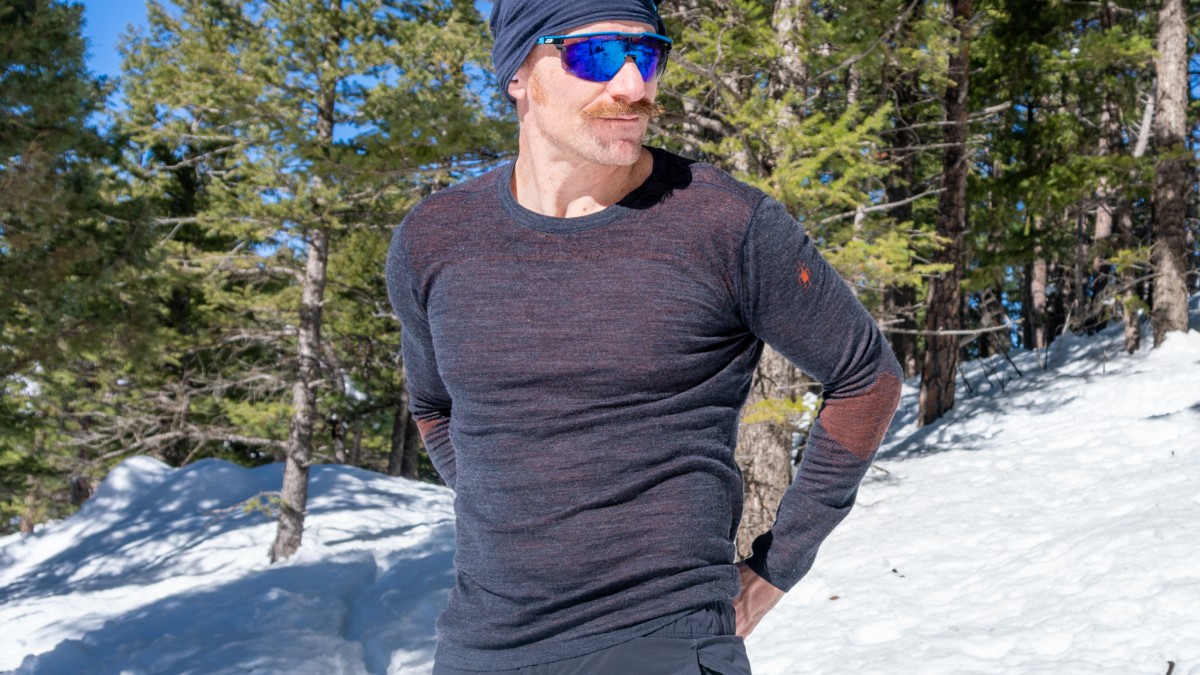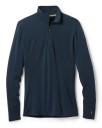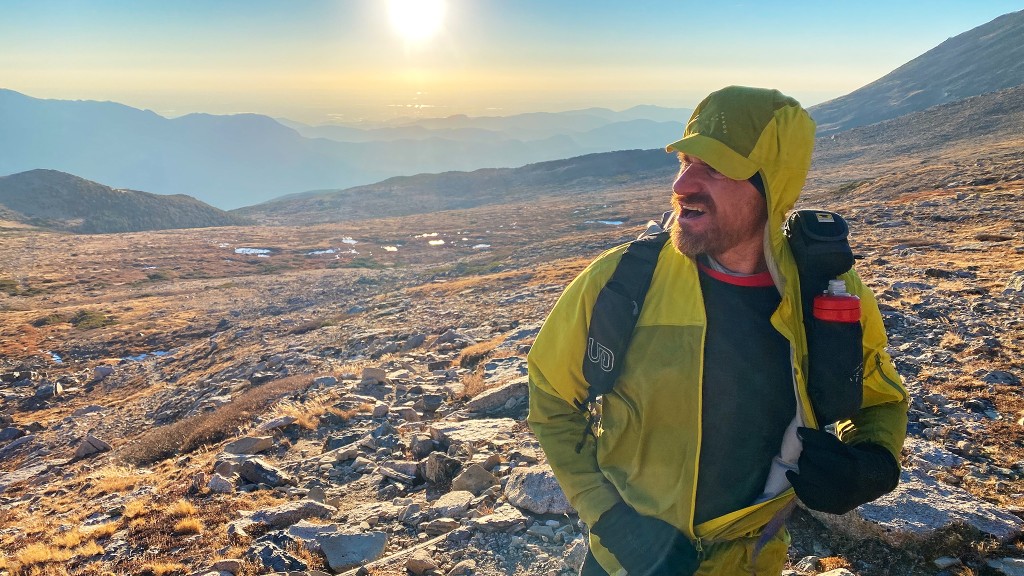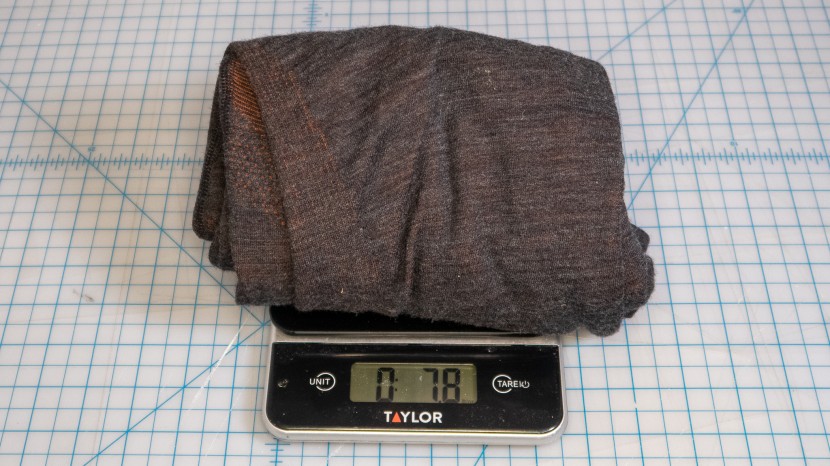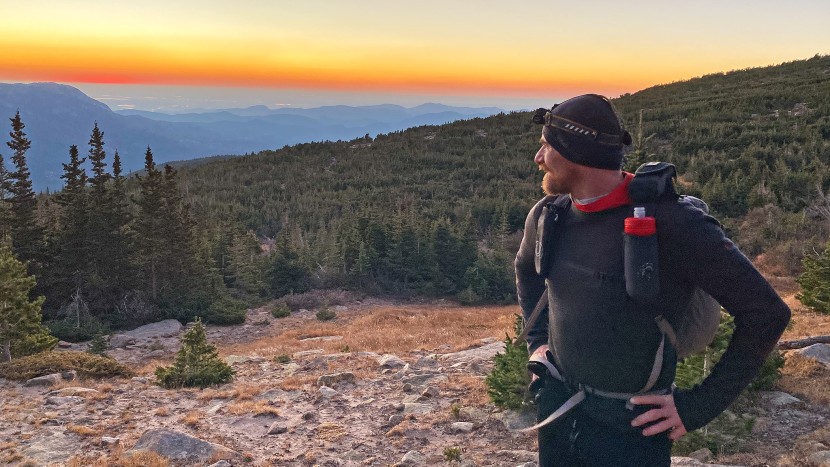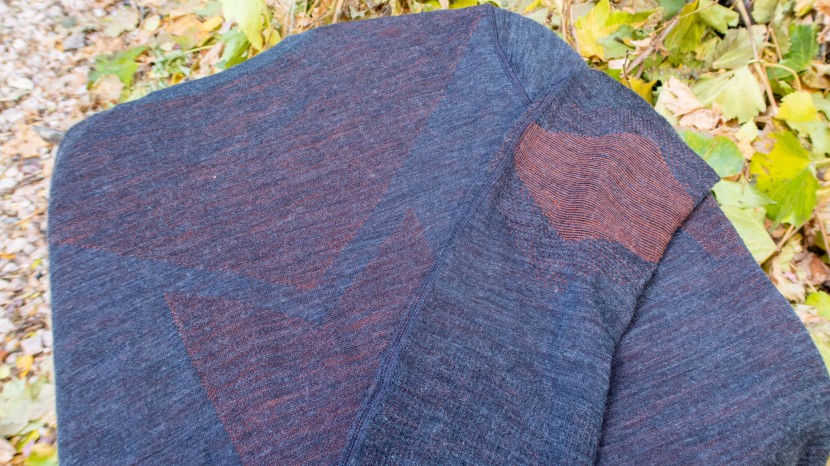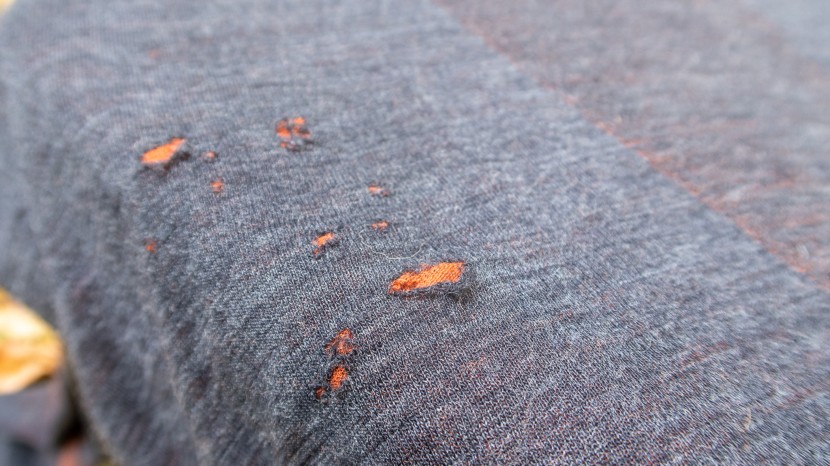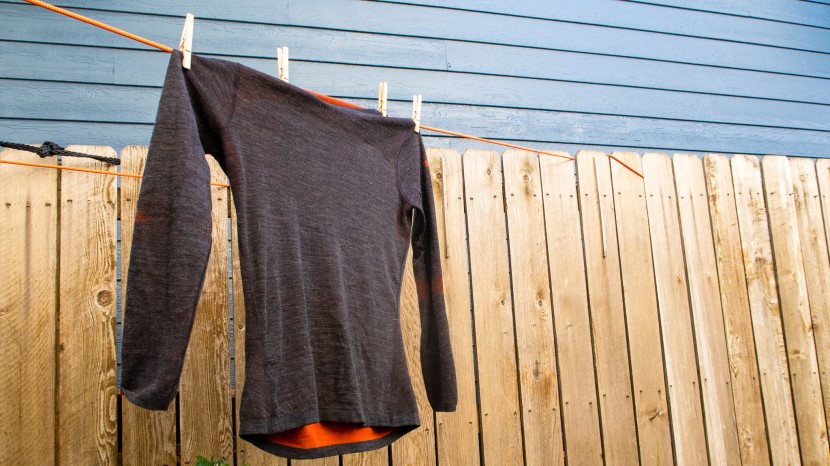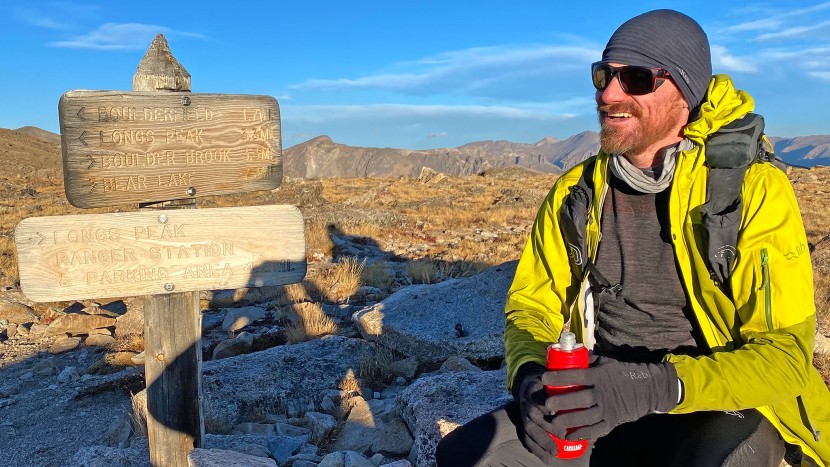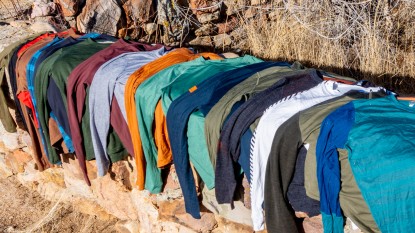Smartwool Intraknit Thermal Merino Review
Our Verdict
Compare to Similar Products
 This Product
Smartwool Intraknit Thermal Merino | |||||
|---|---|---|---|---|---|
| Awards | Best Midweight Layer | Best Overall Base Layer | Best Synthetic Bang for Your Buck | A Comfy, Inexpensive Option for Non-Technical Use | Best Value for Merino |
| Price | $130.00 at REI Compare at 2 sellers | $66.00 at Backcountry Compare at 3 sellers | $60 List $59.95 at REI | $35 List $27.82 at Amazon | $50 List $49.99 at Amazon |
Overall Score  |
|||||
| Star Rating | |||||
| Bottom Line | This base layer is made for those who spend time in the cold and need to keep warm, comfortable, and dry | If ultimate warmth over everything else is what you seek in a base layer, look no further | Reach for this base layer when the temperature drops to wear underneath your jacket | Grab this base layer if you're looking for a top made of a soft polyester that still performs | An excellent lightweight, tight-fitting 100% merino base layer for summertime duties |
| Rating Categories | Smartwool Intraknit... | Smartwool Classic T... | REI Co-op Midweight... | Carhartt Base Force... | Merino.tech Crew |
| Warmth (25%) | |||||
| Breathability (20%) | |||||
| Comfort and Fit (20%) | |||||
| Durability (15%) | |||||
| Drying Speed (10%) | |||||
| Layering Ability (10%) | |||||
| Specifications | Smartwool Intraknit... | Smartwool Classic T... | REI Co-op Midweight... | Carhartt Base Force... | Merino.tech Crew |
| Measured Weight (Size Large) | 8.0 oz | 11.3 oz | 10.0 oz | 9.3 oz | 6.8 oz |
| Fabric Weight Class | Midweight | Midweight | Midweight | Midweight | Lightweight |
| Material | 53% Merino wool, 45% polyester, 2% elastane | 100% Merino wool | 92% recycled polyester, 8% spandex | 100% polyester | 100% Merino wool |
| Fit | Slim fit | Semi-fitted | Semi-fitted | Loose | Semi-fitted |
| Measured Shirt Length (Size Large) | 29.0 in | 28.0 in | 29.0 in | 28.5 in | 29.0 in |
| Thumb Loops | No | No | Yes | Yes | No |
| Air Dry Test | 45 min | 70 min | 55 min | 46 min | 55 min |
| Dryer Safe | No | Yes | Yes, tumble dry low | Yes, tumble dry medium | Yes, tumble dry low; recommended lay flat to dry |
| Odor Control Fabric | Naturally odor resistant | Naturally odor resistant | None | Anti-odor treatment | Naturally odor resistant |
| UPF Sun Protection | None listed | None listed | 50 | None listed | 25 |
| Seam Stitching | Flatlock seams (mesh inserts are seamless 3D) | Flatlock seams | Flatlock seams | Flatlock seams | Overlock seams |
| Shoulder Top Seams | Yes | Yes | No | No | Yes |
| Drop Tail Hem | Yes | No | No | Yes | Yes |
| Available Cuts | Crew, 1/4 zip | Crew, 1/4 zip, hoodie | Crew, 1/2 zip | Crew | Crew, v-neck |
Our Analysis and Test Results
Of all the base layers we've tested, the Intraknit Thermal Merino comes with the most buzzwords. What sets this base layer apart from the others is the Intraknit fabric: this top is made with seamless panels of fabric that have slightly different characteristics. Fabric that's slightly thinner for better ventilation is located in areas where you perspire the most. More flexible fabric is found on the elbows, explicitly designed to bend and flex without stretching out. The rest of the shirt is covered in warmer fabric. Sounds complicated, but the end product looks much like any other thermal base layer, and these panels are almost visually imperceptible unless you know what to look for. But wearing the Intraknit reveals all this engineering does what it says it will. The result is a top that's warm, lively, and svelte for its warmth, perfect for those who love to move fast in the cold.
Warmth
The Intraknit Thermal scored well in our warmth tests, especially for the overall weight of the top. This top will act similarly to a 200 g/sm Merino wool layer while weighing on the scale like a 175 g/sm base layer. The soft, Intraknit fabric is excellent at trapping pockets of air between its weaved pattern and visually looks less compressed than many other base layers we've tested. The most surprising aspect of the Intraknit Thermal is just how lofty it feels in hand. It's almost like two layers sandwiched together somehow.
This warmth isn't applied uniformly throughout the base layer. For the men's model, the center back, armpits, and top of the shoulders are ventilated more than the rest of the top. This is achieved using less dense fabric panels than what's used in the rest of the base layer. These panels are subtle, as the technology used means there aren't any seams between them. I perspire more than most, but the ventilating fabric found on the Intraknit helps me have a more enjoyable time running around in the cold.
Breathability
The woven tech of the Intraknit Thermal aids in breathability. Both wool and polyester layers are hydrophobic, meaning they'll excel at their job of wicking moisture from the surface of your skin and depositing it onto the exterior of the fabric instead of letting it sit and soak in. The Intraknit weave is also looser than many of the wool and wool blends we've tested, allowing water to move through more easily.
During real-world testing out in Rocky Mountain National Park on a cool Fall day, the Intraknit Thermal Merino acted as a great base layer as I trudged up above treeline. Mountain climbs from low altitude to out past treeline are sometimes tricky, as it's easy to overheat quickly in the trees where you're shielded from wind and weather, only to freeze above treeline care of a sweated-out baselayer. Time I don't have to stop to strip off or put on a layer is time I can use to finish my climb before it gets dark and really cold outside. With the Smartwool Intraknit, I can start at the trailhead wearing only what I need, only putting on a heavier coat once I get high up where it's really windy.
Comfort and Fit
The fit of the Intraknit can be described as “body hugging.” It's a slim fit with fabric that has quite a bit of stretch and recoil strength. This layer has seamless panels where different fabric characteristics are expressed; some panels have better breathability and less warmth. Other panels, like on the elbows, allow better movement — and this will hopefully help with wear. No matter the panel, the 53% Merino wool, 45% polyester, and 2% elastane blend feels a little scratchier than other 150-200 g/sm wool/wool blend base layers tested.
Still, overall comfort is better than most, and the test team was happy that all actual seams on the Intraknit Thermal Merino are of the flatlock variety. There is also a drop tail hem, the sleeves are generously long, and the neckline is not overly tight. That said, some less-than-ideal patterning leaves some interesting seam junctions, including by the armpits. If you have larger shoulders, this may turn into a pressure point with this slim fitted base layer. A seam also runs on top of the shoulders, which can cause chafing for those who wear a heavy pack. Our testers prefer a design that removes the top shoulder seam using raglan sleeves or an additional top shoulder panel.
Durability
As is typical for most wool and wool blends, durability is not this layer's strong suit. Even though almost half of the Intraknit is made up of tougher synthetic material, the weakest link is still the delicate wool. In our harsh abrasion test, I was able to rip open fairly large holes in the fabric. Again, not uncommon for wool/wool blends of any thickness. Underneath a mid and outer layer would be the best place for this layer to live out a long, fruitful life.
In our tests, I found the quality and stitching top-notch, as expected from this reputable brand. Multiple washings created a bit of fuzz on the surface, but nothing out of the ordinary for a Merino wool blend shirt. You want to absolutely avoid putting this top into the clothes dryer at any heated temperature, given both wool and elastane are part of the fabric blend. Wool tends to both shrink and lose its form; elastane will lose its elasticity when exposed to heat.
Drying Speed
Our on-the-line drying speed test showed some of the best marks for this layer for wool and wool blends. The Intraknit's loose weave easily gave up its moisture instead of locking it up underneath a tighter weave. Being one the loosest weaves of anything we've tested means that this base layer dries as fast as a lighter-weight fabric.
Drying speed is closely coupled to breathability; if the former is fast, often the latter has good performance as well, and this seems to be the case for the Intraknit Thermal. This may be a great choice of base layer for those who sweat generously or find themselves traveling in more humid climates. Hang this top to dry, though. It's too delicate for the dryer.
Layering Ability
The body-hugging design of the Intraknit Thermal Merino makes it comfortable on its own, and it also makes it perfect for laying on mid and outer layers. The slight stretch of the fabric helps keep pinch points and chafing at a minimum, which is important in the cold when you're not in a great position to start peeling off layers just to adjust your base. The seamless paneling also helps with layering. Since some panels have more breathability in key spots, others are more stretchy; this should altogether help with keeping the base layer comfortable to wear underneath your other layers. I personally found this baselayer nothing I had to think about at all — no news is good news, and I could instead focus on my outdoor adventures.
Additional features like long sleeves and a drop tail hem make riding up less of a problem. The fabric's exterior is softer and fuzzier than many of the base layers we've tested, and this can sometimes hook into mid-layers like gridded fleece, much like velcro. If you're using a mid-layer like that, this could be a base layer to avoid.
Should You Buy the Smartwool Intraknit Thermal Merino?
This top makes a great cold-weather base layer. If that's what you're looking for, go for it. Just make sure the slimmer fit works with your body type, and plan to wear this base layer underneath more durable layers. Price could be a deciding factor: the Intraknit tech does not come at a discounted price. Do we think it's worth the MSRP? In the end, yes, especially for those looking for a little more performance out of their base layer while still saving some grams.
What Other Base Layers Should You Consider?
For an even warmer layer, the Smartwool Classic Thermal Merino 1/4 Zip is our top choice. It lacks the Intraknit weaving but has a nice front quarter zipper to aid with breathability. For something just a little lighter, look at the Ortovox 185 Rock'N'Wool Long-Sleeve, which features similar soft Merino wool that lofts up somewhat similar to the Intraknit. For a more budget-friendly option, look no further than the Meriwool Merino 250 Long Sleeve, which will give you similar warmth with the compromise of being a little less durable and a little heavier.


